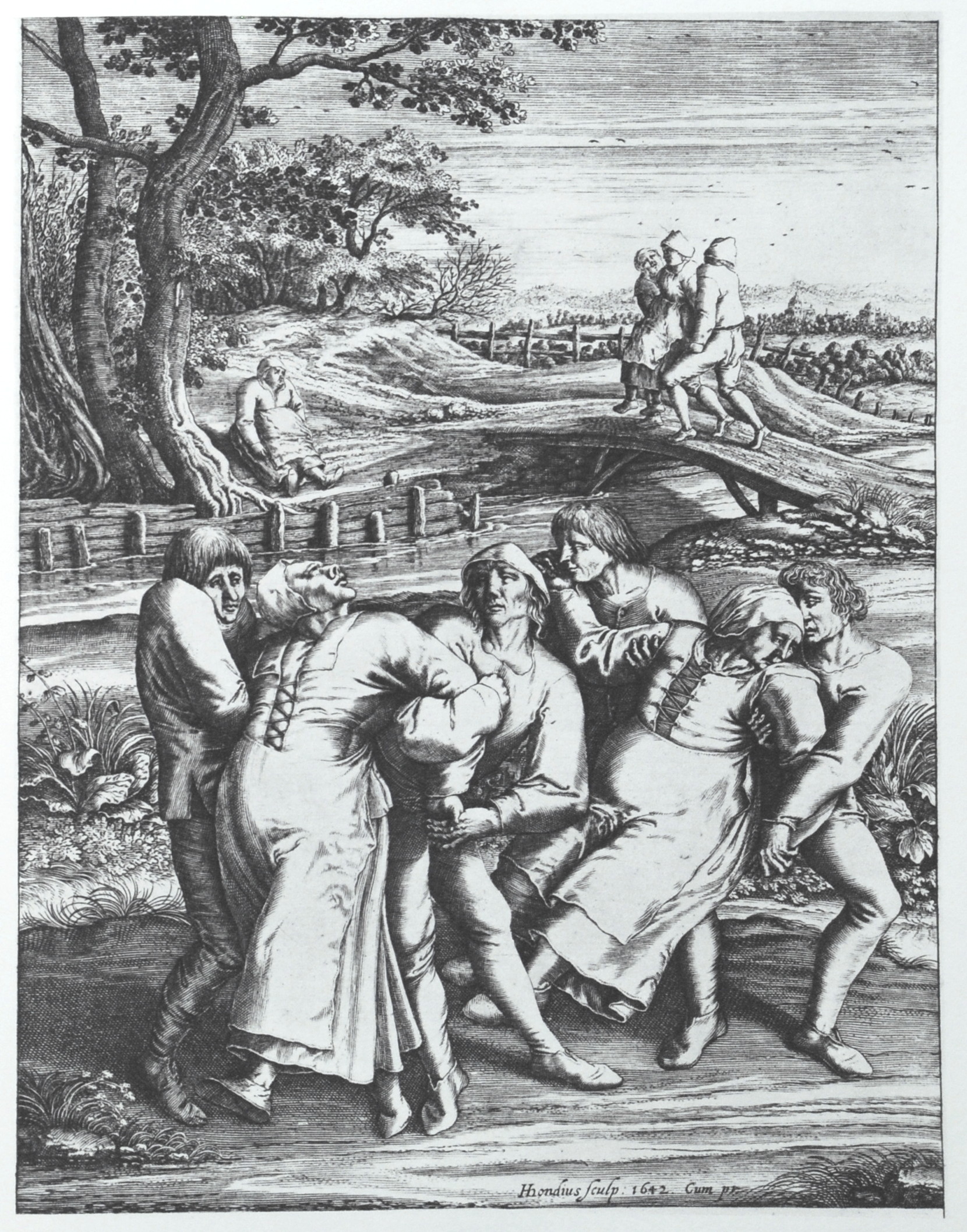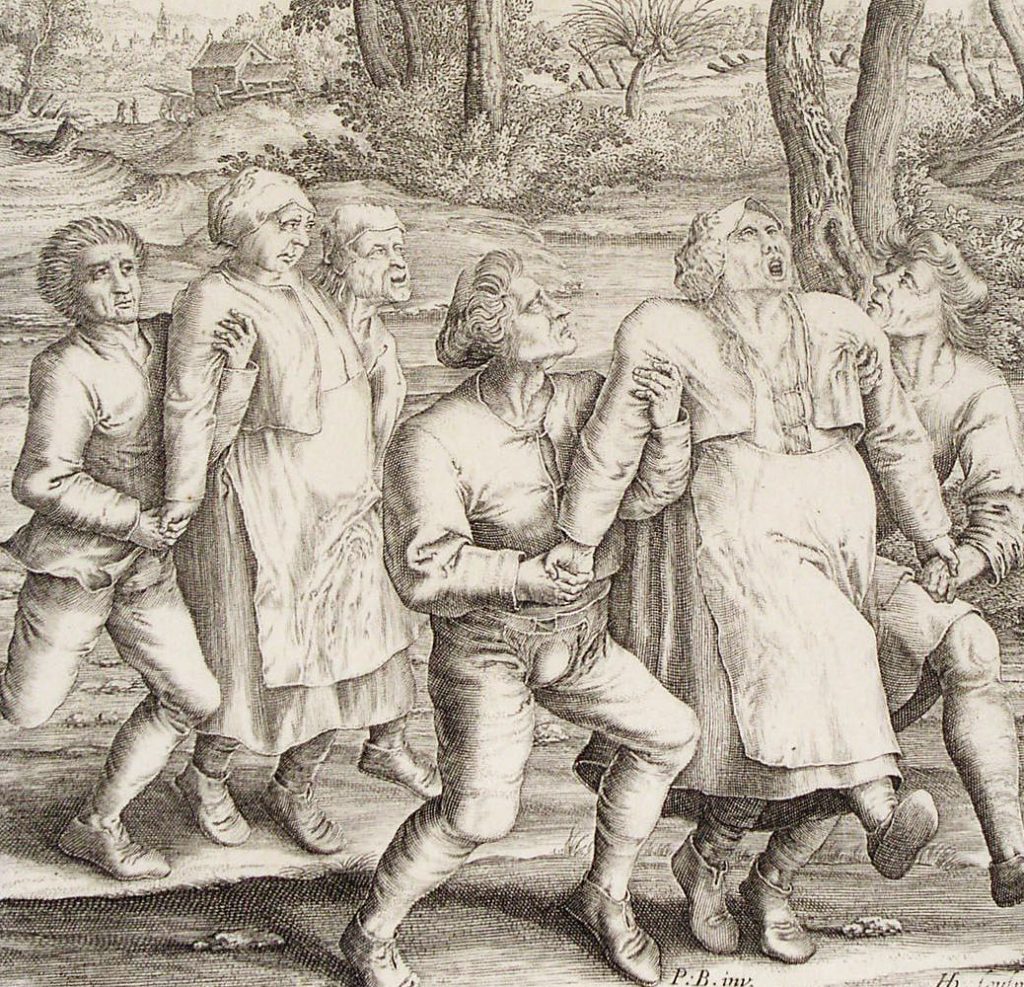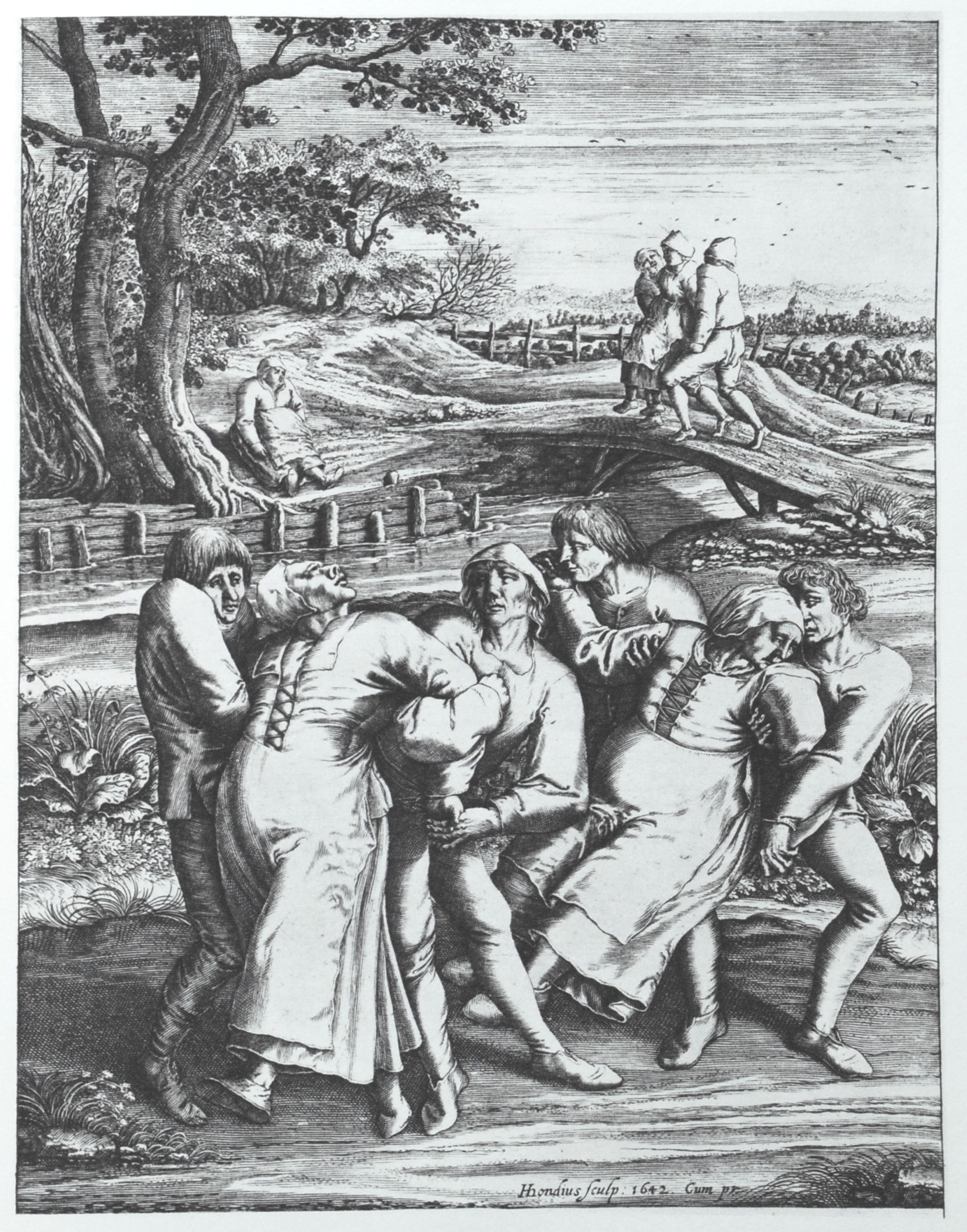In the scorching summer of 1518, a peculiar and terrifying phenomenon gripped the city of Strasbourg. What began with one woman’s inexplicable urge to dance would soon spiral into one of history’s most bizarre mass hysterias, leaving a trail of exhausted bodies and baffled witnesses in its wake.
It all started with Frau Troffea, an unremarkable resident who suddenly began dancing in the streets one July morning. Her movements were neither graceful nor celebratory – instead, she danced with a possessed intensity that defied human limits. Despite her husband’s desperate pleas, she continued dancing day and night until her feet were bloodied and raw.

Image credit: Dancing plague of 1518 – Wikipedia
What happened next would transform this singular strange occurrence into a citywide catastrophe. Within days, 30 others joined her manic dance. By month’s end, an astounding 400 people were caught in this deadly choreography. The streets of Strasbourg became an otherworldly spectacle of writhing bodies and endless movement, with dancers continuing until they collapsed from exhaustion.
The city’s authorities, completely baffled by this unprecedented crisis, made a fateful decision that would only worsen the situation. They constructed special stages in the horse and grain markets, hiring musicians to play for the dancers. Their logic? Perhaps if the afflicted could ‘dance it out,’ they would eventually stop. This strategy backfired dramatically, as the music and stages only attracted more participants to join the deadly dance.

Image credit: The Dancing Plague of 1518 — The Public Domain Review
Medieval physicians scratched their heads, attributing the phenomenon to ‘overheated blood.’ Meanwhile, the clergy saw the hand of St. Vitus, the patron saint of dancers, in this bizarre affliction. As the death toll mounted – with up to 15 people dying daily from exhaustion – desperate measures were taken. The city banned almost all music and dancing, allowing only string instruments at weddings, believing drums might trigger more cases.
Modern scientists have since dismissed earlier theories about ergot poisoning, pointing instead to mass psychogenic illness as the likely culprit. The people of Strasbourg, already stressed by poor harvests and political instability, may have fallen victim to their own deeply held beliefs about divine punishment. Their fear of St. Vitus’s curse became a self-fulfilling prophecy, manifesting in this deadly dance marathon.
The dancing plague finally subsided in early September, but not before leaving an indelible mark on history. It stands as a powerful reminder of how collective fear and belief can literally move people to death – a medieval manifestation of mass hysteria that claimed lives not through disease or violence, but through the simple, unstoppable urge to dance.
References:
What Was the Dancing Plague of 1518? | HISTORY – link
The Dancing Plague of 1518 — The Public Domain Review – link
Dancing plague of 1518 – Wikipedia – link
Categories: Do you know, Historical Mysteries, Mass Hysteria, Medieval History, Unexplained Phenomena
Tags: Dancing Plague, Historical Mysteries, Mass Hysteria, Medieval History, St. Vitus dance, Strasbourg, unexplained phenomena
Religion: Christianity
Country of Origin: France, Germany
Topic: Mass Hysteria
Ethnicity: European


